Vauxhall Astra Electric Sports Tourer review: not the first electric estate – but the best so far
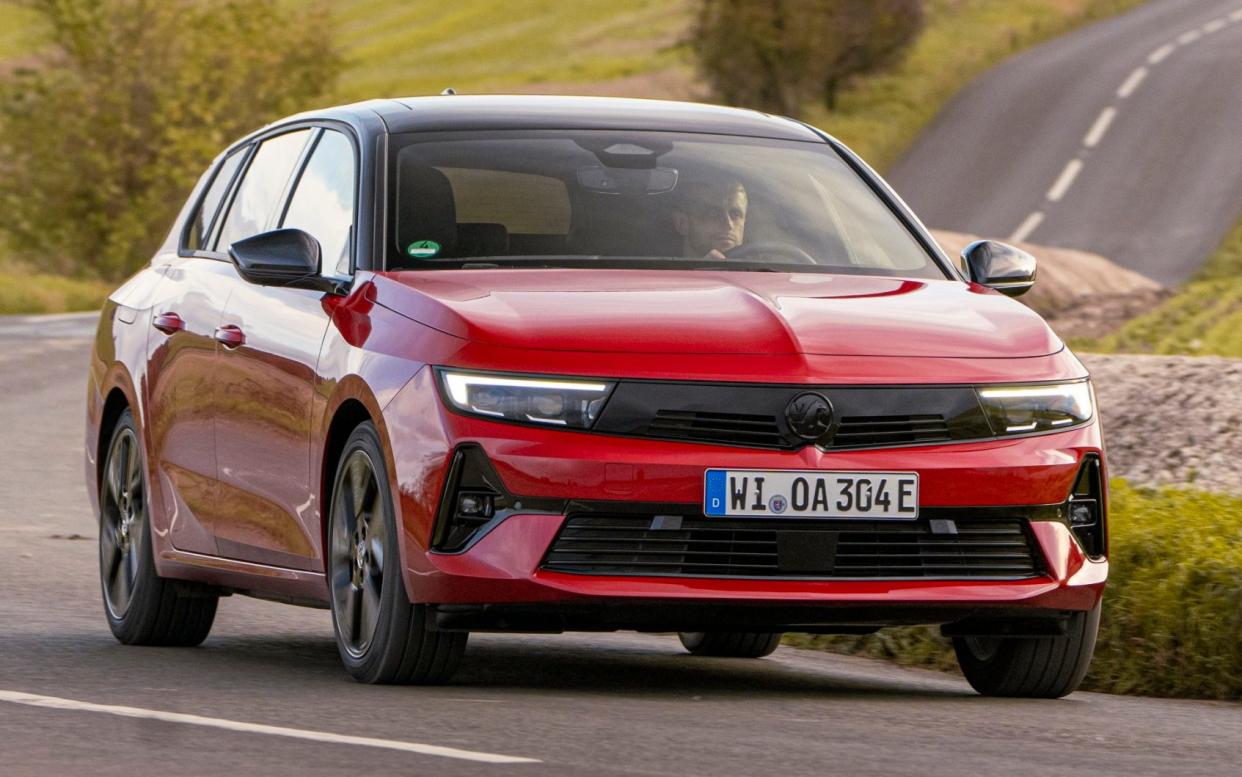
It’s fair to say there are quite a lot of people who’ve been waiting a long time for a car like the Vauxhall Astra Electric Sports Tourer. While this isn’t the first battery-powered estate, those already on the market consist of a slightly quirky Chinese-built bargain bin special (the MG 5 EV) and a quasi-supercar shooting brake that’s a rather more exclusive proposition (the Porsche Taycan Sport Turismo).
With the Astra, however, the electric estate has finally broken into the mainstream – a cause for celebration among those who want an EV but need to haul a Labrador or two. And Vauxhall knows a thing or two about building a good estate car; even Elizabeth II, after all, chose Vauxhall estates as her personal transport for many a year.
Having said that, we weren’t wholly enamoured with the electric Astra hatchback earlier this year, citing its firm ride quality and cramped rear seats. So from this slightly underwhelming base, has Vauxhall really built the electric estate Britain has been waiting for?
Astra is born
You can now get an entry-level Design version of both the Astra hatchback and estate; when we tested the former, this wasn’t available, so the starting price was above £40,000.
However, this is still not a cheap car, with prices for the estate now starting at £39,995, rising by £2,000 for the mid-range GS; note that that’s the Astra Electric GS, not the Astra GSe, which is a plug-in hybrid with sporty trappings. Obviously.
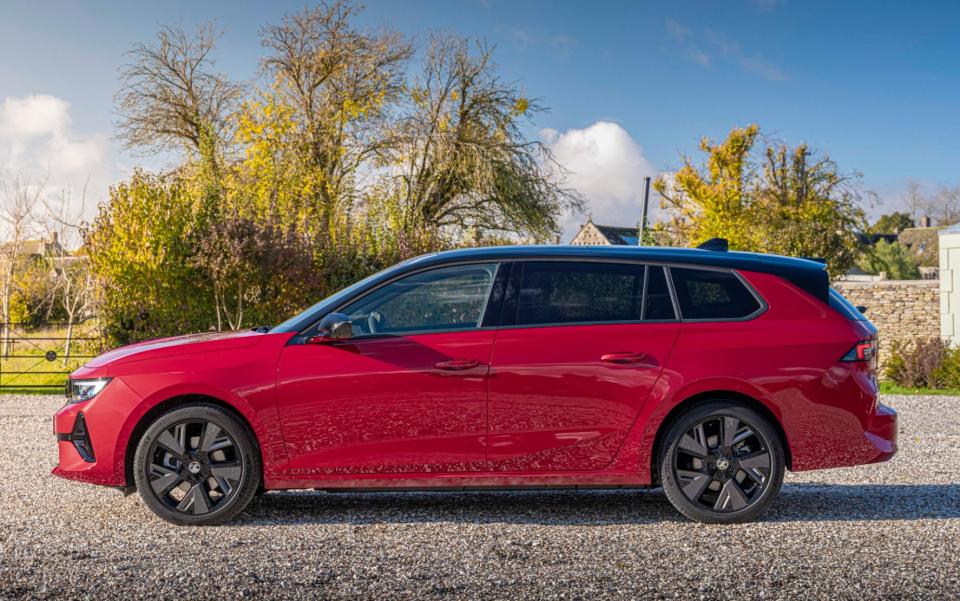
For the top-spec Ultimate tested here you’ll be looking at more than £45,000. That means it costs more than the equivalent Skoda Enyaq, which offers vastly more room as well as greater range. For a top-of-the-range MG 5 EV, you’ll struggle to pay much more than £34,000. True, this Ultimate version of the Astra is groaning under the weight of all the standard equipment, but even then it still looks like too much money.
That’s especially the case when you factor in the range and charging speeds. According to government tests, it’ll get 256 miles on a charge, which should equate to between 180 and 205 miles in the real word, and it’ll charge at 100kW, so it should get from 10 to 80 per cent of that figure in 26 minutes, adding around 134 miles of real-world range in that time. However, a Tesla Model 3 is exactly the same price as the entry-level Astra Sports Tourer, and officially will do 318 miles between stops, and charge at 170kW, giving a 10 to 80 per cent boost in just 25 minutes, thereby adding around 167 miles in that time.
Granted, none of these (with the exception of the Enyaq) can offer the Astra’s practicality. Vauxhall says it hasn’t lost any boot space in the conversion to electric, though it is cheating a little because it’s comparing with the Plug-In Hybrid model, which has 92 litres less than the petrol Sports Tourer, for a total volume of 516 litres.
By comparison, the MG gives you 490 litres, and a Volkswagen ID.3, which is to be fair not available as an estate, has 385.
Long story short
The Astra sits on a longer wheelbase than the hatchback, which means greater space in the back – and that’s important, given the hatchback’s rather cramped hind quarters.
In the Sports Tourer, however, there’s more than enough space for adults to sit comfortably in the rear or – perhaps more relevant – to install a pair of big, bulky child seats.
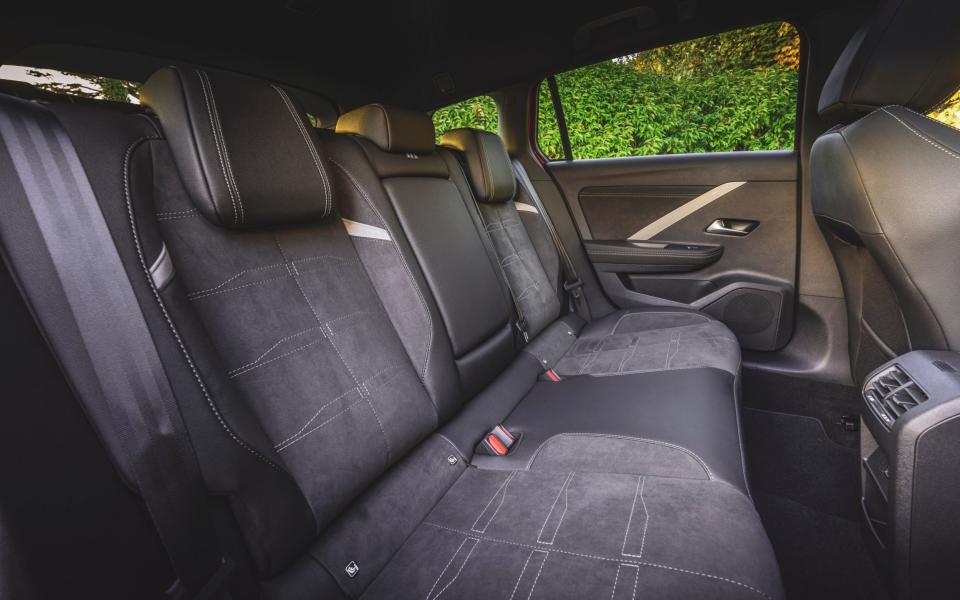
It’s even better in the front, with lots of storage for odds and ends, and the same smartly styled dashboard, built from tactile materials, as with other Astras.
Vauxhall gets one over on its Stellantis platform-mates here (the Astra has the same underpinnings as the new Peugeot e-308, shortly to be available in estate form too) – not to mention Volkswagen’s ID.3 – by giving you proper physical controls for the temperature. That means you can adjust the climate control without having to delve into a touchscreen menu or prod at a touch-sensitive panel.
They’re rather lovely controls, too – piano key switches set in a row of the same, which move with a pleasing slickness, as indeed does the rest of the switchgear.
The touchscreen itself takes a bit of getting used to, as there’s no main menu; you have to use a series of widgets to access various functions, which means swiping between screens.
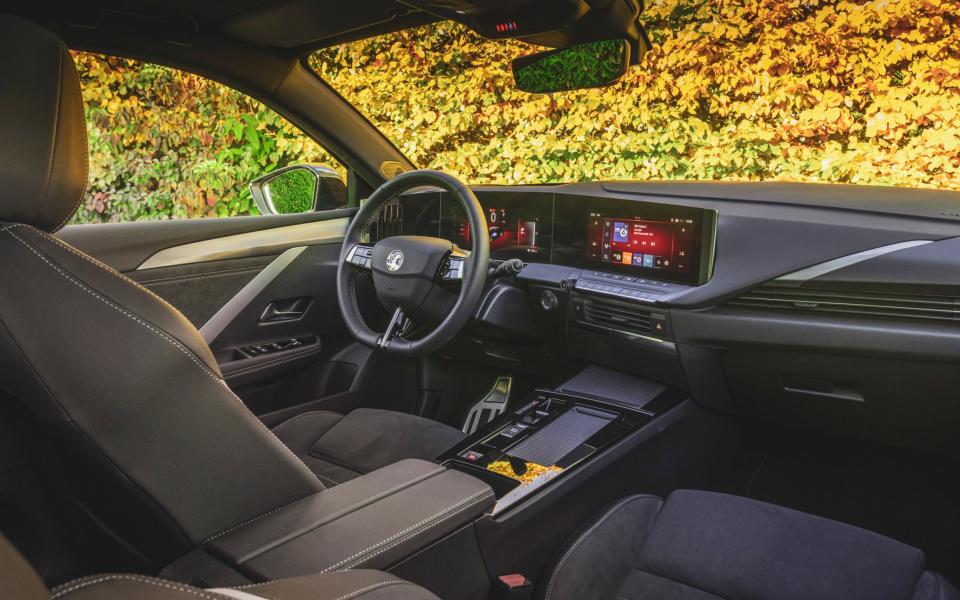
It feels a bit short on processing power, too, taking some time to load certain functions. But it’s OK once you’ve worked your way around it, and the little profile icon of an old Vauxhall Nova SR’s rear quarter is a cute touch.
Ducking and diving
As you head onto Britain’s pockmarked country lanes, it becomes immediately clear that this estate is a degree or two more compliant in the suspension department.
Whether it’s because of the extra length in the wheelbase or the extra weight, it’s hard to say, but either way there’s less harshness over sharper-edged bumps, and less side-to-side head toss on rougher stretches of carriageway.
The difference is enough to make the Sports Tourer’s ride comfort more tolerable than the hatchback’s, and that makes it an altogether more palatable proposition.
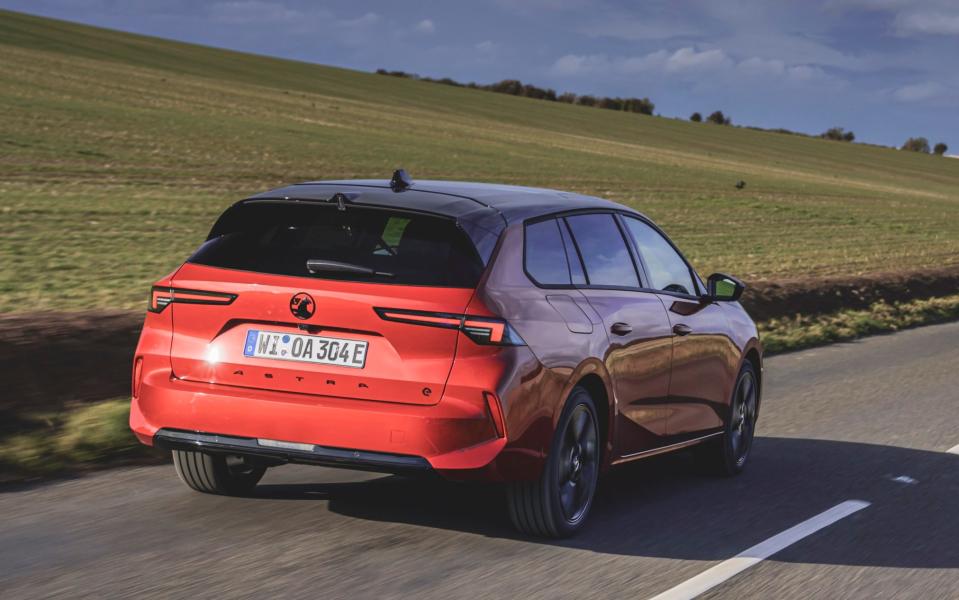
There’s enough get-up-and-go from the motor, too, and it delivers its power silently. The Astra’s a pretty quiet car, actually, its conventional profile (by contrast with the bluff noses of some SUV rivals and tall roof of the ID.3) meaning less wind noise; there is a bit of tyre noise, but not so much that it becomes invasive.
Like the hatchback, the Sports Tourer feels relatively slick through quick direction changes; there’s lots of grip, the nose bites eagerly and the relatively taut suspension keeps the body from flopping over, meaning an emergency swerve can be carried out with minimum fuss.
It might be a stretch to call this Astra fun – the lack of feel through the steering puts paid to that notion – but then this is a family estate, rather than a hot hatchback, so the way the Sports Tourer handles feels appropriate even if it isn’t exciting.
The Telegraph verdict
The biggest problem with the Astra Electric in hatchback form was that, even by the standards of EVs, it cost too much. It was also too firm-riding and cramped in the back.
The Sports Tourer cures these last two ills – but it does not, cannot, solve the former. Which is a shame, because otherwise this is a likeable, comfortable car that’s well finished and pleasant to drive.
It even looks handsome, both inside and out. But unless they really need the boot space, any company car driver is going to wonder why they’re paying the same amount of benefit-in-kind tax for an Astra as they would for a Tesla Model 3.
And unless they really can’t stand the idea of an SUV, any retail buyer is going to wonder why they should pay more for one than they would for a Skoda Enyaq. As long as that remains the case, this is an easy car to like, but a difficult one to recommend.
Telegraph rating: Three stars out of five
The facts
On test: Vauxhall Astra Electric Ultimate Sports Tourer
Body style: Five-door estate (also available as a five-door hatchback)
On sale: Now
How much? £45,460 on the road (Electric Sports Tourer range from £39,995)
How fast? 105mph, 0-62mph in 9.2sec
How economical? 4.2mpkWh (WLTP Combined)
Electric powertrain: AC permanent magnet synchronous motor with 51kWh (usable) battery, 100kW on-board DC charger, Type 2/CCS charging socket
Electric range: 256 miles
Maximum power/torque: 154bhp/199lb ft
CO2 emissions: 0g/km (tailpipe), 26g/km (well-to-wheel)
VED: £0
Warranty: 3 years / 60,000 miles (no mileage limit in first year)
Spare wheel as standard: No
The rivals
MG 5 EV Trophy Long Range
154bhp, 235 miles, £33,495 on the road
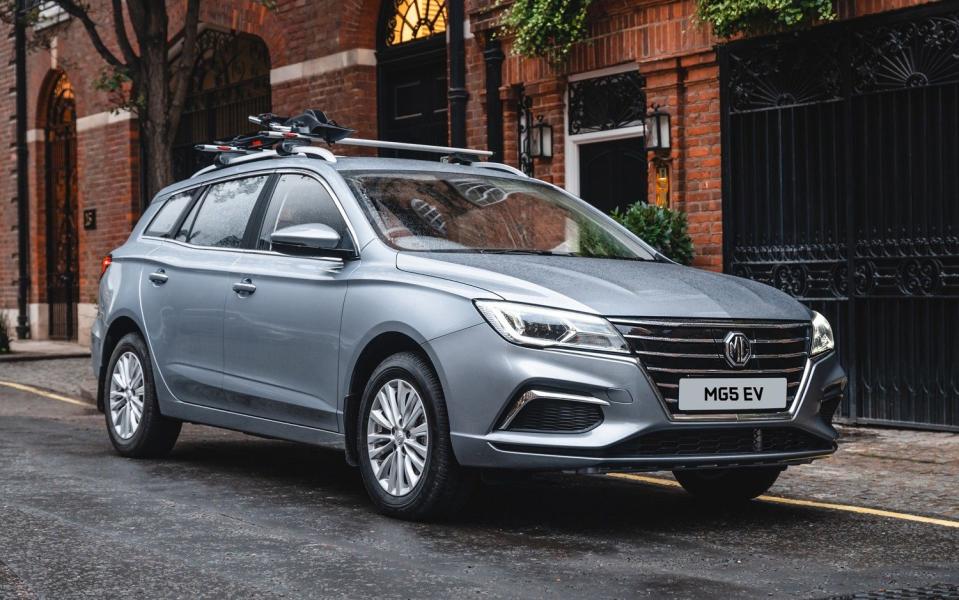
We like the MG 5, especially since its recent facelift gave it lumbar support (an unthinkable omission from earlier models) and better interior plastics. But the fact remains that it feels like quite a cheap car, with a glitchy touchscreen and some residual tackiness inside, and it won’t go quite as far as the Astra on a charge. You might be able to forgive it plenty for the price, though – especially when you remember the seven-year warranty.
Skoda Enyaq 85 Edition
282bhp, 348 miles, £43,875 on the road
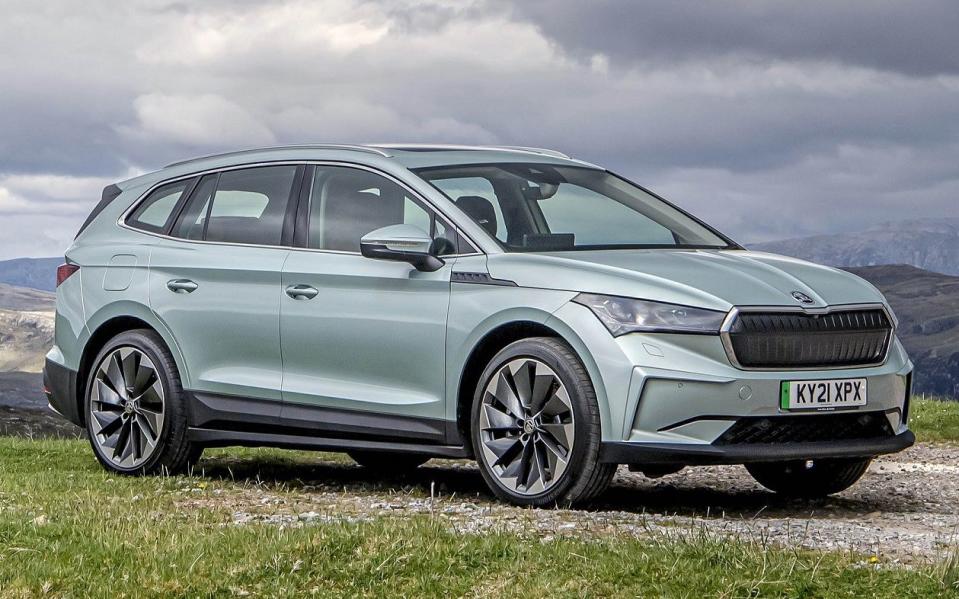
In terms of value, this Enyaq rather smashes the Astra into a cocked hat. Even after you add £1,025 for the optional heat pump, it’s still cheaper – yet it’ll go almost 100 miles more on a charge. It’s also quicker, smoother-riding, faster-charging, no less energy efficient and roomier – indeed, its whopper of a boot puts the Astra’s in the shade. True, the Astra has more equipment, although the Enyaq is hardly sparsely furnished.
Peugeot e-308 GT SW
154bhp, 256 miles, £TBC (est £43,500)
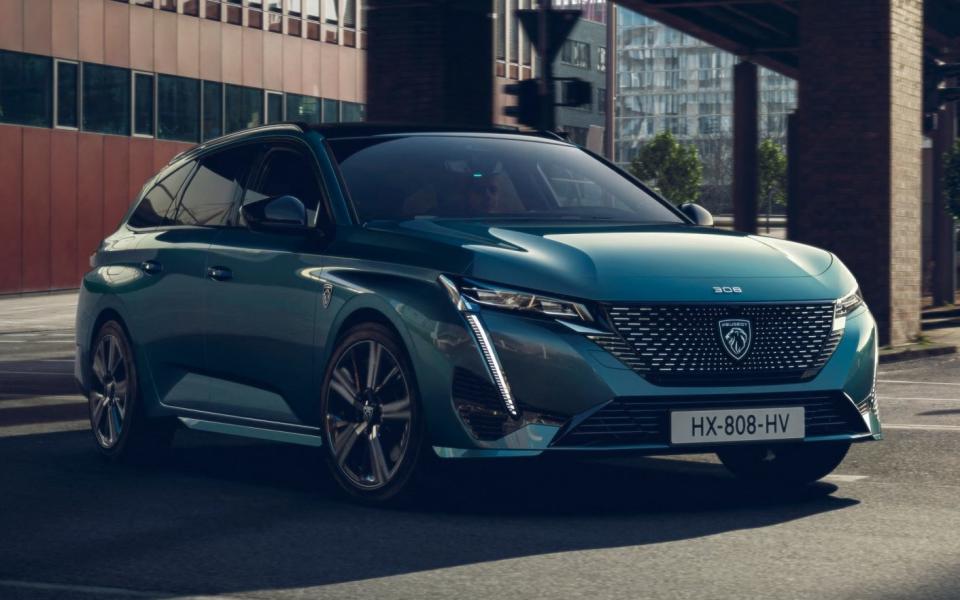
We’ve yet to drive the Astra’s upcoming platform-mate, though we have tried the hatchback version. Like the Astra, it’s more pleasant on the road as a result of its softer ride, but an emphasis on touch-sensitive controls makes it fiddlier inside. Also like the Astra, the e-308’s problem is going to be its price – this top-spec GT is cheaper, but has less equipment.

